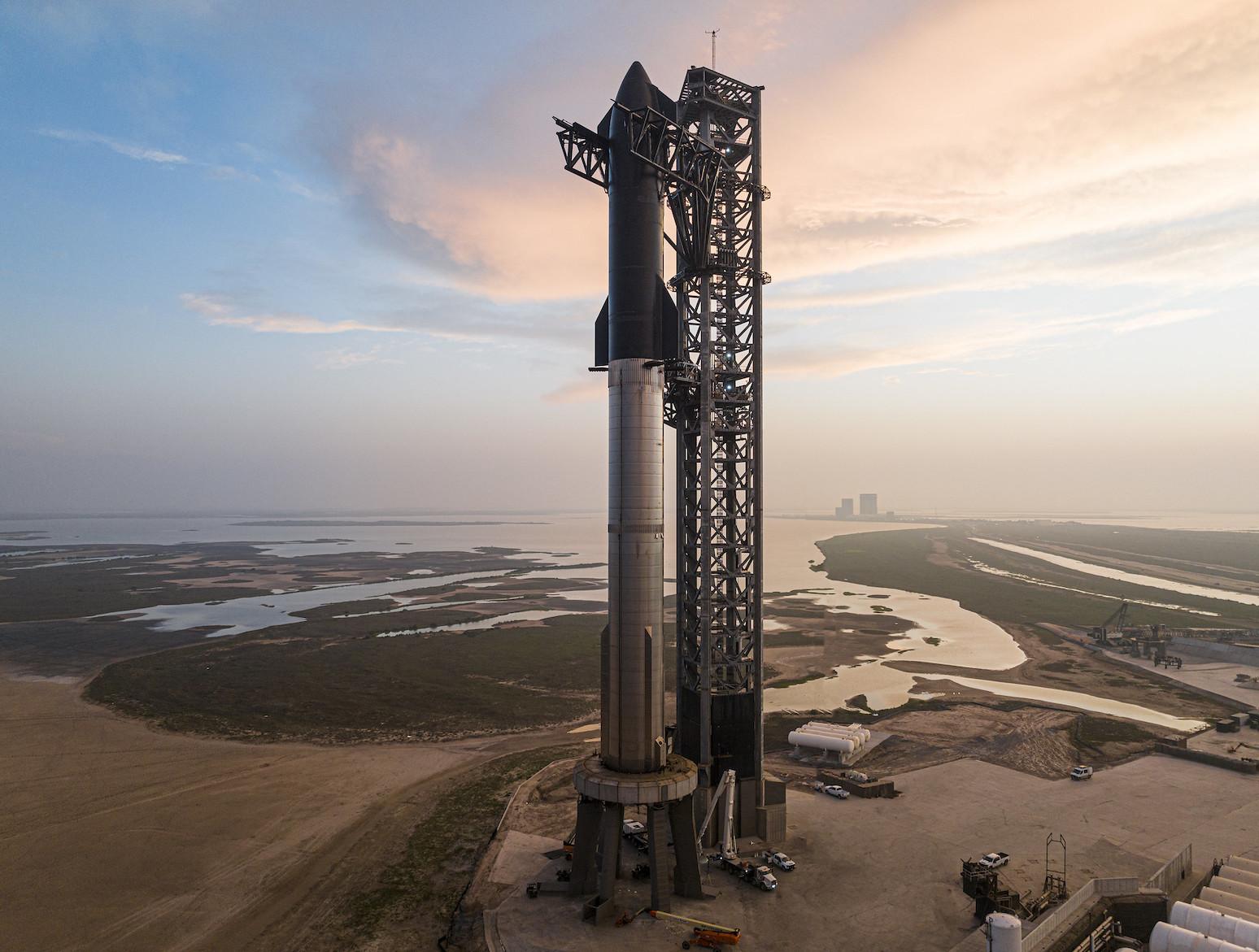
COLORADO SPRINGS—U.S. Space Systems Command is closely watching SpaceX’s launch test of the fully reusable Starship/Super Heavy launch vehicle, planned for April 20.
SpaceX’s Starship/Super Heavy is a two-stage launch vehicle. The first stage booster, the Super Heavy, has never flown and is to be tested soon as part of the overall system.
The U.S. Space Force’s development, acquisition, launch and logistics field arm, Space Systems Command, sees multiple military applications for Starship, including drastically reducing the cost to launch spacecraft to low Earth orbit (LEO) and rocket cargo missions to anywhere in the world.
“We track Starship very closely,” said Maj. Gen. Stephen Purdy, program executive officer for assured access to space, at the Space Symposium on April 18.
Starship, as well as Blue Origin’s New Glenn launch vehicle, are designed to provide “massive throw weight to LEO, not to any other domain,” Purdy says. “Potentially, long-term, we move to kind of a massive freight-train model of pushing all the customers into LEO.”
As part of that concept, SSC envisions using space tugs to transport spacecraft to their destinations, including regions as far as lunar, extra-lunar and Mars orbits, he says.
Space Systems Command is also working with the Air Force Research Laboratory’s “Rocket Cargo” program, an effort to examine the possibility of transporting military cargo across the globe using rockets. SpaceX is participating in the Rocket Cargo program.
Noting that SpaceX President Gwynne Shotwell has said the company aims to work toward launching Starship as frequently as once per day—as well as acknowledging the development and testing hurdles the rocket maker must overcome—Purdy says the fully reusable, super-heavy launch capability is fascinating to think about.
“The most fascinating one that opens up is the rocket cargo discussion, which is odd because it’s actually about returning cargo to the Earth, not actually in orbit,” he says. “But if you’re at that kind of [daily] rate, the [Boeing] C-17 cost would be more expensive than a Starship cost.”
Designed to carry 100-165 tons to orbit, SpaceX also says Starship would be able to fly between any two points on Earth in an hour or less.
The C-17 has a cargo capacity of 85 tons and a cruise speed of about 517 mph.
“Coupled with short timelines of a launch from [Cape Canaveral Space Force Station] or Vandenburg [SFB] to the Pacific Theater,” says Purdy, “[Starship’s capacity] really starts to open one’s eyes to think about how can we support an Indo-Pacom fight directly with a rocket cargo type concept that comes back and lands on different islands.”
The U.S. Air Force frequently has talked about the “tyranny of distance” across the Pacific Ocean. The service would have to fly cargo aircraft thousands of miles to resupply troops in a potential conflict with China in the Western Pacific. The U.S. Defense Department is looking for novel ways to sustain combat missions, including the Rocket Cargo program, to alleviate the logistical burden.






Comments
This is power point hogwash. While the C-17 is slower and costs more to fly, it will be reusable. Please tell me how a Starship is going to recover from a distant and remote Pacific location?
"Rocket cargo" will only be realistic for the most valuable and time sensitive materials. Then there is the problem of survivability. A Starship will have both a massive I/R and radar signature as it comes in to land. Which should make it an easy target to kill.